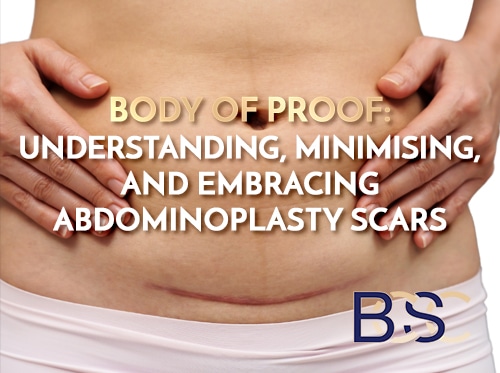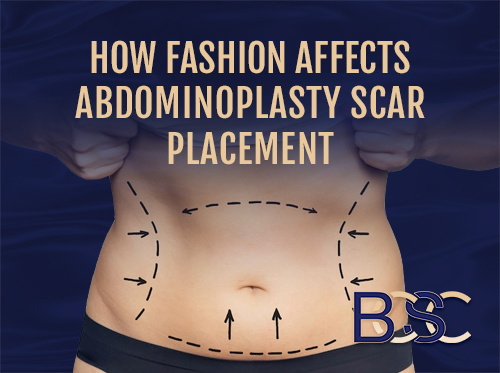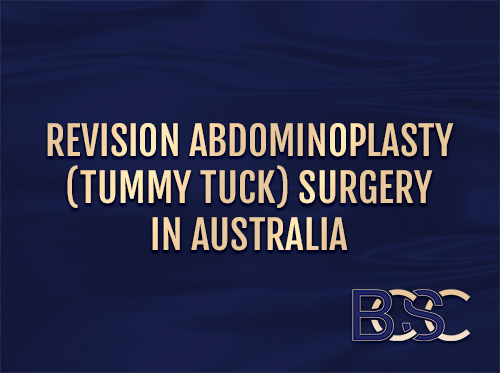Treating Loose Skin Following Bariatric Surgery on the Abdomen and Back
Treating loose skin on the abdomen and back following bariatric surgery involves non-invasive approaches like maintaining a healthy diet, exercising, and topical treatments; or surgical procedures like an abdominoplasty.
** abdominal and back skin can lead to health and psychological complications. Therefore, most post-bariatric patients will seek ways to get rid of the excessive loose skin on their back and abdomen. Treating ** skin resulting from bariatric surgery involves non-surgical or surgical approaches.
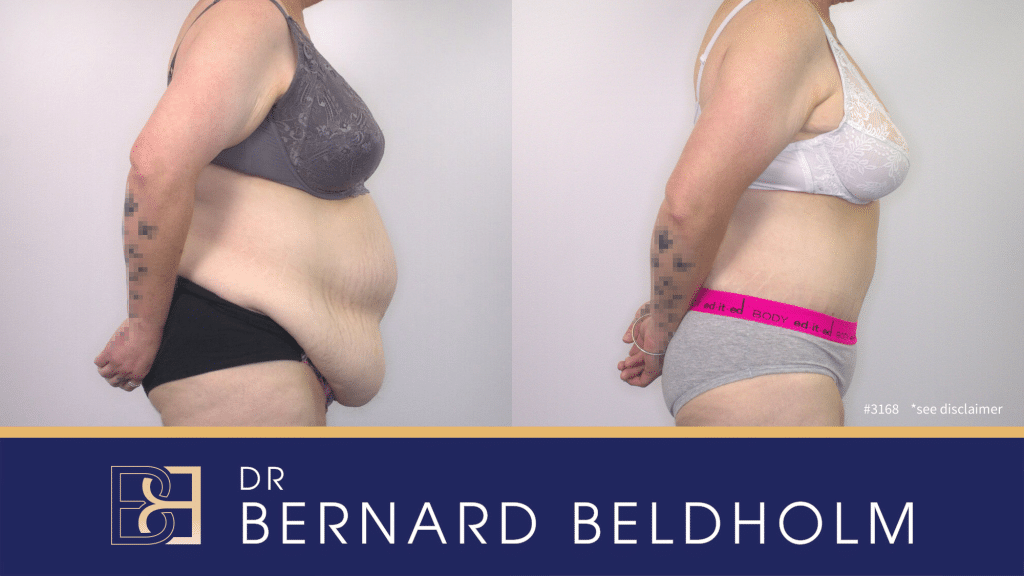
Disclaimer: Operation performed by Dr Bernard Beldholm. Adult content, surgery has risks; individual results vary, seek 2nd opinion. Please see the full disclaimer.
Factors Affecting Skin Tightening After Bariatric Surgery
There are several factors that influence how the skin tightens and bounces back after bariatric surgery. These include:
Age
The skin loses elasticity with age, resulting in more redundant skin after bariatric surgery in older patients than ** ones. Skin elasticity determines how the skin bounces back after stretching. Loss in skin elasticity results from low production of elastin and collagen.
Genetics
Genetics is a key determinant of most conditions in our bodies. Some people are predisposed to less skin elasticity, making them more likely to have ** skin after bariatric surgery.
Amount of Weight Lost
Patients who lose a large amount of weight, 50kg (approximately 100 pounds) or more, are more likely to experience ** skin. In addition, losing weight within a short period increases the chance of ** skin because the skin has less time to retract normally.
According to a study on post-bariatric surgery, “[t]he sudden change in body mass index (BMI) after ** weight loss lowers skin tone and leads to a failure of the excess soft tissue to retract, resulting in redundant skin.”
Another study shows that “[p]atients with a weight loss >50 kg showed a significantly redundant skin discomfort compared to weight loss <20 kg.”
Certain Medical Conditions That Cause Skin Thinning
Some patients suffer from medical conditions that affect the skin’s elasticity. These include illnesses that impair collagen production, leading to skin thinning. These include subcutaneous T-cell lymphoma and Pseudoxanthoma Elasticum, among other medical conditions.
Smoking
Smoking causes premature ageing, leading to the production of less collagen and elastin. This results in skin thinning and loss of skin elasticity. Therefore, patients who smoke are more likely to develop ** skin after bariatric surgery.
Treatment Options: Common Non-Invasive Approaches
There are various treatment options for loose skin following bariatric surgery. Non-invasive ones include:
Healthy Diet, Exercise, and Hydration

gradually return to normal daily routine
Post-bariatric patients are advised to maintain a healthy diet to ensure ** wound healing and ** skin elasticity. A healthy diet is important after bariatric surgery as the surgery decreases the intestines’ ability to absorb nutrients, causing nutritional deficiencies in most patients. Therefore, patients should avoid unhealthy eating habits like taking too much food at a time and are encouraged to chew food well.
Patients should also ensure they stay hydrated by consuming lots of fluids to keep the skin supple and ** its elasticity when eating solid foods. In addition, patients are advised to exercise regularly to help build muscle, eliminating the ** skin. It also ** the skin’s appearance, giving it a toned look.
Topical Treatments
Topical treatments, like creams and massages, help moisturise the skin and promote the production of elastin and collagen, enhancing its elasticity. However, there is no evidence to support their effectiveness.
Compression Garments
Compression garments apply pressure on the skin, offering support and promoting lymphatic drainage. They provide a short-term solution by reducing the appearance of loose skin.
Vitamin and Mineral Supplements
Vitamins and minerals, such as Vitamin B12, Vitamin C, and iron, help promote skin healing and offer the nutrients required to ensure strong and elastic skin during your weight loss journey.
A study on post-bariatric surgery published in Pubmed suggests that “[p]atients who underwent bariatric surgery are at risk of nutrient deficiencies, including vitamins B12, B1, folate, A, D, C, and K, as well as trace minerals, such as iron, zinc, selenium, and copper.”
Non-Invasive Procedures
Cryotherapy and laser treatment helps stimulate collagen production, ** the skin’s strength and elasticity however do have minimal effect on significant loose skin.
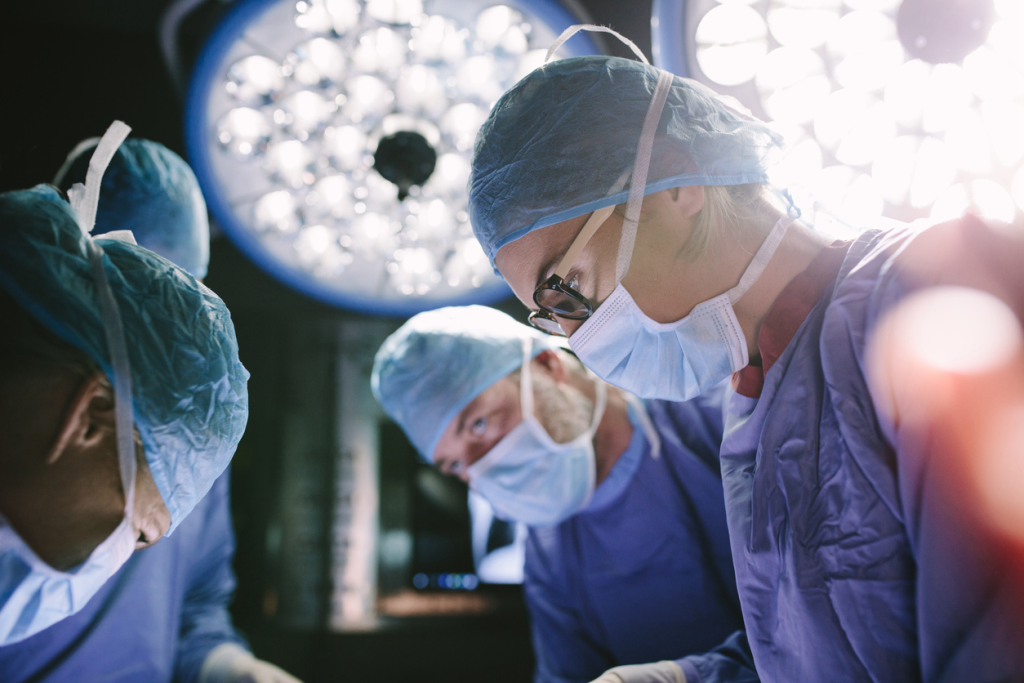
Surgical Procedures to Treat ** Skin Following Bariatric Surgery
Non-invasive treatment options offer a certain degree of skin tightening. However, they may not be fully efficient in ** massive skin ** resulting from this weight loss surgery. Therefore, post-bariatric patients with massive skin ** will require surgical treatment options.
According to scientific research on patient ** after bariatric, “[a]fter bariatric surgery, ** excess skin is an unsatisfactory problem. Therefore, body contouring surgery must be included in morbid obesity management.” The same study also points to the abdomen as a common site for developing ** skin after bariatric surgery.
Abdominoplasty procedures are the standard surgical treatment options for patients with massive skin ** in the abdomen and back after bariatric surgery. These procedures include:
Full Abdominoplasty (Tummy Tuck)
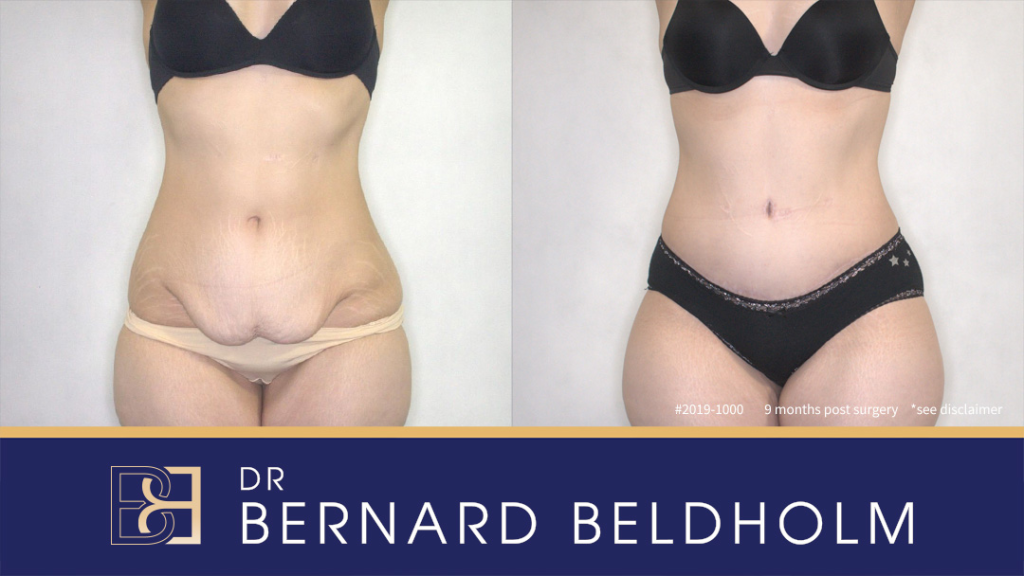
Full abdominoplasty post weight loss | BCSC
Disclaimer: Operation performed by Dr Bernard Beldholm. Adult content, surgery has risks; individual results vary, seek 2nd opinion. Please see the full disclaimer.
Full Abdominoplasty, also referred to as a complete/standard abdominoplasty, ** ** skin on the whole abdomen, corrects diastasis recti (separated abdominal muscles), and repositions the belly button when required. The procedure is suitable for post-bariatric patients with ** skin in the lower and upper abdomen and minimal or no skin ** on the back.
A full abdominoplasty surgery takes 3-4 hours, and the patient spends 2-4 nights at the hospital for monitoring. Most full abdominoplasty patients can resume their daily activities 2-4 weeks after surgery.
Extended Abdominoplasty (Tummy Tuck)

Extended Abdominoplasty post weight loss | BCSC
Disclaimer: Operation performed by Dr Bernard Beldholm. Adult content, surgery has risks; individual results vary, seek 2nd opinion. Please see the full disclaimer.
Extended abdominoplasty ** ** skin in the abdomen, hips, and back. It also corrects diastasis recti and repositions the belly button. Suitable for post-bariatric patients with ** abdomen and back skin, extended abdominoplasty ** patients who require an intermediate procedure between a full abdominoplasty and belt lipectomy (circumferential abdominoplasty).
An extended abdominoplasty surgery has a longer surgery and recovery period than a full abdominoplasty. The surgery takes 4-5 hours, and patients can resume their daily chores within 3-6 weeks.
Fleur-de-Lis Abdominoplasty
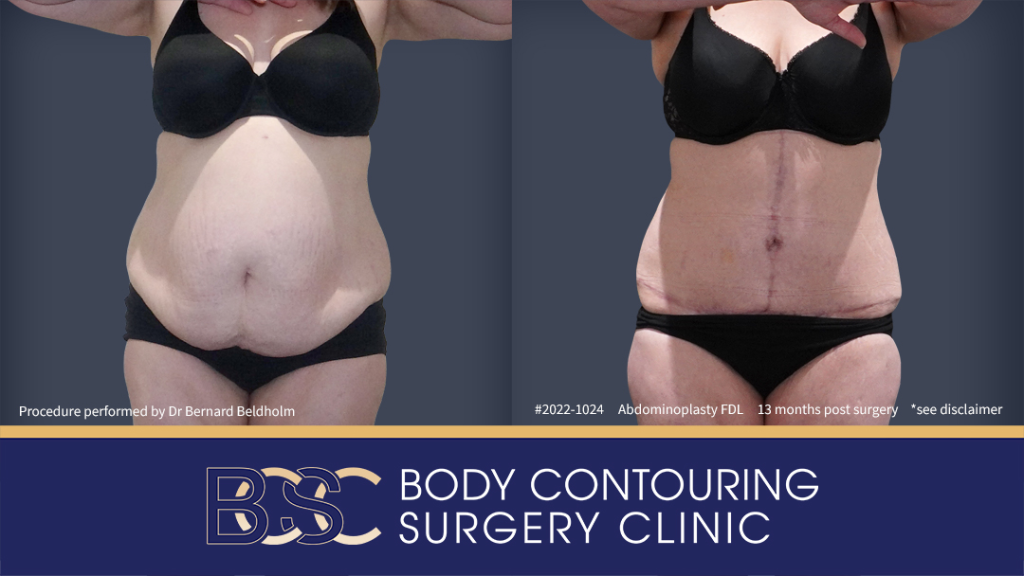
FDL Abdominoplasty Procedure performed by Dr. Bernard Beldholm, pictured, before and 13 months after surgery.
Disclaimer: Operation performed by Dr Bernard Beldholm. Adult content, surgery has risks; individual results vary, seek 2nd opinion. Please see the full disclaimer.
Fleur-de-Lis abdominoplasty is a common treatment for ** ** skin in major weight loss patients. It helps remove excess skin that would be challenging to eliminate with standard abdominoplasty procedures. The procedure involves an inverted T incision resembling a lily flower, hence its name.
Fleur-de-Lis abdominoplasty is suitable for major weight loss patients, bariatric surgery, and gastric bypass surgery patients with massive ** skin, especially in the upper abdomen. Despite its invasiveness, the procedure is not associated with increased complications. However, it has a longer surgery period and recovery period.
A Fleur-de-lis abdominoplasty study on massive weight loss patients (50 pounds or more) concludes that “fleur-de-lis abdominoplasty can be ** performed with complication rates comparable to those of traditional abdominoplasty techniques.”
Lipo-Abdominoplasty
Lipo-abdominoplasty is an abdominoplasty procedure that ** excess fat and ** abdominal skin by combining liposuction with abdominoplasty. The procedure involves ** excess fatty tissue through liposuction and then the excess skin through standard abdominoplasty procedures.
The procedure ** the effects of a standard abdominoplasty, especially in patients with excess fatty tissue. Lipo-abdominoplasty adds an additional hour to the time required for a standard abdominoplasty procedure.
“Lipo-abdominoplasty is a new, more physiological and versatile operation that drastically reduces complications, extends the indications for patient recruitment to the obese and super obese populations, and simplifies the surgery while also giving a better aesthetic result with ** recovery,” notes a study published in the National Library of Medicine.
VASER Liposuction
VASER (Vibration Amplification of Sound Energy at Resonance) liposuction uses ultrasound waves to liquefy fat deposits. The ultrasound produces heat that liquefies the fat cells and separates the fatty tissue from the underlying muscle and skin. After liquefaction, the fat is removed through suction using cannulas.
VASER liposuction removes fat from locations that would be challenging through standard procedures and loosens the skin for excision. It allows for better emulsification, reduces operative time, creates better tunnels, preserves nerves and vessels, and causes lesser pain and hematomas.
Belt Lipectomy – Lower Body Lift Surgery

Body lift procedures to treat excess skin following gastric bypass surgery. Abdominoplasty Procedure performed by Dr. Bernard Beldholm, pictured, before and 13 months after surgery.
Belt Lipectomy, also known as a lower body lift surgery or circumferential abdominoplasty, is a common abdominoplasty procedure after major weight loss, removing ** skin 360 degrees around the “belt line”. The procedure ** excess skin on the abdomen, back, and buttocks and includes mons pubis and thigh contouring.
Belt Lipectomy suits patients with “love handles” around the lower belly and back. In addition, the procedure ** loose skin on the thighs and buttocks, as ** skin on the lower back, abdomen, thighs, and buttocks is common in major weight loss patients.
Because the procedure ** a larger surgical area, it is more invasive than the other abdominoplasty procedures. Therefore, it requires more extensive surgery and a recovery period. The patient stays 5-7 days at the hospital after surgery and can resume their daily chores after 4-8 weeks.
Summary of Downtime and Recovery
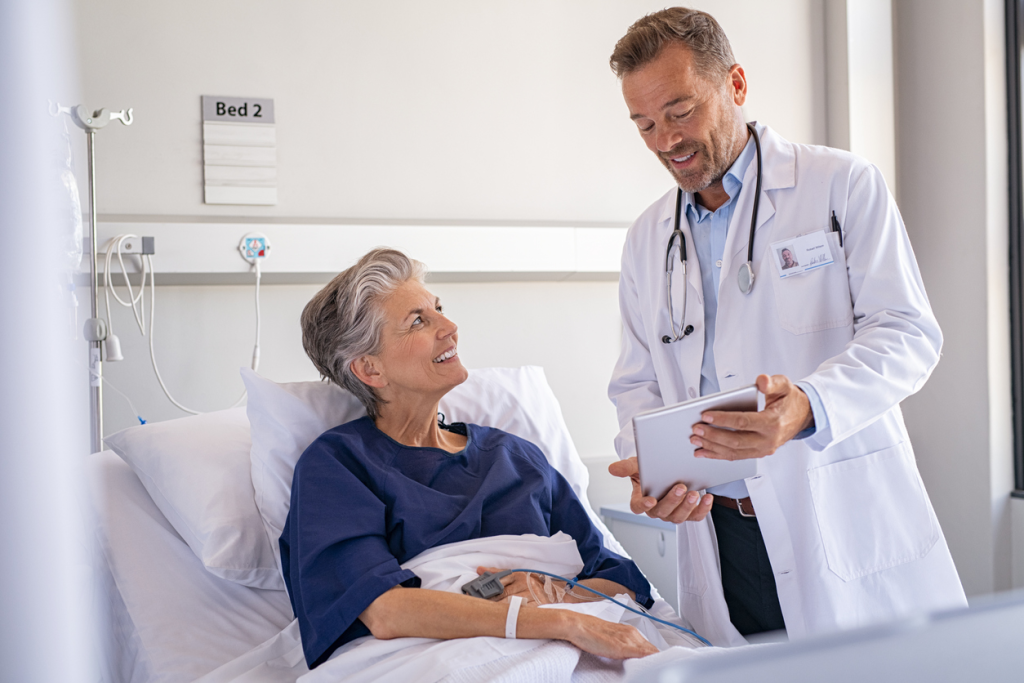
Below is a breakdown of what to expect from the above surgical options.
- Full Abdominoplasty: Most patients can resume their daily activities after 2-4 weeks
- Extended Abdominoplasty: Patients can resume their daily activities after 3-6 weeks
- Belt Lipectomy (Circumferential Abdominoplasty): Patients can resume their daily activities after 4-8 weeks
- Full Vaser Lipo Abdominoplasty: Most patients can resume their daily activities after 2-4 weeks
- Extended Vaser Lipo Abdominoplasty: Patients can resume their daily activities after 2-4 weeks
Risks and Complications Associated with Surgical Treatment Options
Surgical treatments are characterised by an increased risk of complications when compared to non-surgical methods. In addition, abdominoplasty is associated with higher rates of complications than other aesthetic procedures, with the risk increasing with the procedure’s invasiveness.
A study on complication rates resulting from abdominoplasty notes that “[a]bdominoplasty is associated with a higher complication rate compared with other aesthetic procedures.” In addition, the study states that “[c]ombined procedures increased the risk of complication (abdominoplasty alone, 3.1 percent; with liposuction, 3.8 percent).”
The common complications resulting from surgical treatment options include:
- Hematoma
- Seroma
- Wound infections
- Skin necrosis
- Abnormal scarring
- Loss of skin sensitivity
- Blood clots
Cost Comparison of Surgical Treatment Options
The cost of each procedure mainly depends on its invasiveness, with more invasive procedures costing more. However, other factors like the patient’s needs, hospital location, and additional procedures like liposuction may affect the pricing.
Therefore, patients are advised to book a consultation with a specialist surgeon to customise the cost of their procedure.
Bottom Line
Most post-bariatric patients experience loose skin on the abdomen and back due to the massive weight loss resulting from the procedure. Therefore, most patients seek additional procedures to eliminate the excess abdominal and back skin. Non-invasive procedures like exercise, a healthy diet, topical treatments, cryotherapy, and lasers offer some degree of skin tightening. However, these procedures are not fully effective, requiring surgical treatment options like abdominoplasty procedures and liposuction.
References
- Giordano, S., Victorzon, M., Koskivuo, I., & Suominen, E. (2013). Physical discomfort due to redundant skin in post-bariatric surgery patients. Journal of Plastic, Reconstructive & Aesthetic Surgery, 66(7), 950–955.
- Aldaqal, S. M., Makhdoum, A. M., Turki, A. M., Awan, B. A., Samargandi, O. A., & Jamjom, H. (2013). Post-bariatric surgery satisfaction and body-contouring consideration after massive weight loss. North American journal of medical sciences, 5(4), 301–305.
- Elander, A., Biörserud, C., & Fagevik Olsén, M. (2021). Excess skin after weight loss following bariatric surgery: focus on the abdomen. Surgery for obesity and related diseases : official journal of the American Society for Bariatric Surgery, 17(5), 986–993.
- Sadeghi, P., Duarte-Bateman, D., Ma, W., Khalaf, R., Fodor, R., Pieretti, G., Ciccarelli, F., Harandi, H., & Cuomo, R. (2022). Post-Bariatric Plastic Surgery: Abdominoplasty, the State of the Art in Body Contouring. Journal of clinical medicine, 11(15), 4315.
- de Souza Pinto, E. B., Abdala, P. C., Maciel, C. M., dos Santos, F.deP., & de Souza, R. P. (2006). Liposuction and VASER. Clinics in plastic surgery, 33(1), 107–vii.
- Hoyos, A. E., & Millard, J. A. (2007). VASER-assisted high-definition liposculpture. Aesthetic surgery journal, 27(6), 594–604.
- Rangaswamy M. (2008). Lipoabdominoplasty: A versatile and safe technique for abdominal contouring. Indian journal of plastic surgery : official publication of the Association of Plastic Surgeons of India, 41(Suppl), S48–S55.
- Friedman, T., O’Brien Coon, D., Michaels V, J., Purnell, C., Hur, S., Harris, D. N., & Rubin, J. P. (2010). Fleur-de-Lis abdominoplasty: a safe alternative to traditional abdominoplasty for the massive weight loss patient. Plastic and reconstructive surgery, 125(5), 1525–1535.
- Aly, A. S., Cram, A. E., Chao, M., Pang, J., & McKeon, M. (2003). Belt lipectomy for circumferential truncal excess: the University of Iowa experience. Plastic and reconstructive surgery, 111(1), 398–413.
- Winocour, J., Gupta, V., Ramirez, J. R., Shack, R. B., Grotting, J. C., & Higdon, K. K. (2015). Abdominoplasty: Risk Factors, Complication Rates, and Safety of Combined Procedures. Plastic and reconstructive surgery, 136(5), 597e–606e.
Disclaimer: ADULT content. Dr Bernard Beldholm is a Specialist General Surgeon (AHPRA Medical Registration nr: MED0001186274). Any surgical or invasive procedure carries risks. Before proceeding, you should seek a second opinion from a qualified health practitioner. Results, recovery & potential complications will vary for each individual patient. Photos & videos featured are not a guarantee that your results will be the same & do not guarantee a particular surgical outcome. Content on our Instagram page & other social media pages is published with the consent of our patients. The content featured is general in nature and does not constitute medical advice. Immediate post-op results may differ from the final result.

